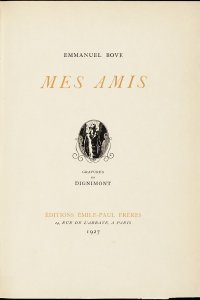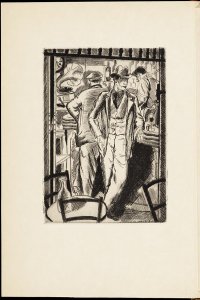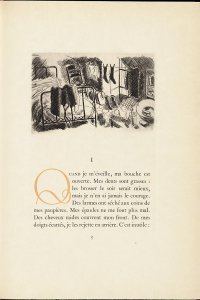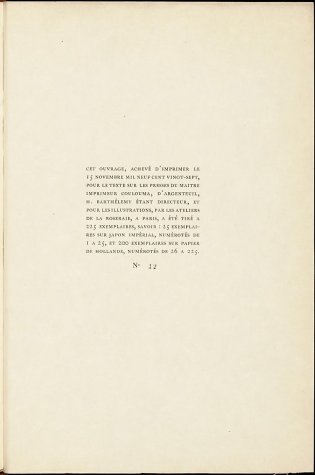Mes amis
Year: 1927
Author: Emmanuel Bove (1898 - 1945)
Artist: André Dignimont (1891 - 1965)
Publisher: Émile-Paul frères
It remains a mystery how Emmanuel Bove, an author who was compared to Dostoyevsky, Chekhov and even Proust, and who was admired intensely by Rainer Maria Rilke, Max Jacob, Philippe Soupault, André Gide and Samuel Beckett, could have been consigned to deepest oblivion immediately following his death. Not until the 1970s did a new 'Bove tree' come into existence, started in Belgium by the Cobra artist Christiaan Dotremont and a few others such as Michel Butor and Pierre Alechinsky. Bove, as they knew, had influenced many authors who came after him. But his books were no longer to be found anywhere. 'Let us bombard the bookstores, let us bombard the publishers. Long live Emmanuel Bove!', wrote Dotremont in a manifesto. That manifesto had the form of easily distributed visiting cards, with the intention of rescuing the writer from oblivion. This campaign was not without result: Bove's books are once again readily available, and his biography has even been translated into Dutch.







